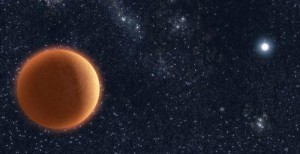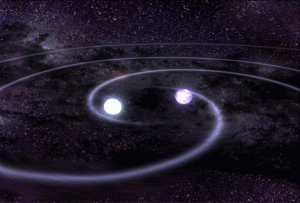The Kuiper belt is a region of objects beyond the orbit of Neptune. You can think of it as an outer asteroid belt, where the bodies are icy rather than rocky. The dwarf planets Pluto, Haumea and Makemake are part of the belt, as well as about 100,000 other bodies. It’s generally thought that the Kuiper belt likely formed during the great migration, when Jupiter moved farther out from the Sun due to interactions with other outer planets. One of the questions, then, is whether other planetary systems would also have a Kuiper belt. Recently, observations from the Gemini South Telescope in Chile have found a similar belt around a young star.
The team observed a ring around a 10-20 million year old star that’s about 50% more massive than our Sun. The belt lies in a range of 37 – 55 AU from the star, which is a similar range to that of our own Kuiper belt. It’s brightness also indicates a similar composition to the Kuiper belt. What’s particularly striking about the ring is that it isn’t centered on the star, but is offset slightly. This could be explained by gravitational interactions with large planets, similar to the way Jupiter affected the formation of the Kuiper belt.
Paper: Thayne Currie, et al. Direct Imaging and Spectroscopy of a Young Extrasolar Kuiper Belt in the Nearest OB Association. arXiv:1505.06734 [astro-ph.EP] (2015)










